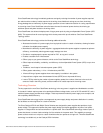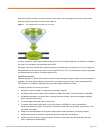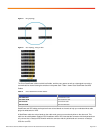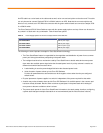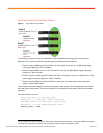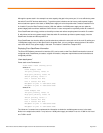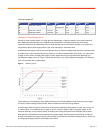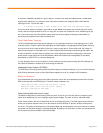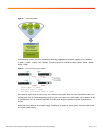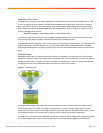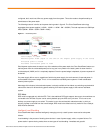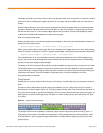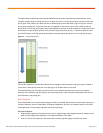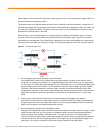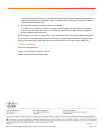
© 2012 Cisco and/or its affiliates. All rights reserved. This document is Cisco Public Information. Page 16 of 17
Power supply slots are named left to right, that is, power supply slot A in on the left and power supply slot B is on
the right (closest to the edge of the switch).
This practice allows us to distribute power sources across all switches in the stack. Otherwise, a single failure in
the power stack would cause larger power demands than what StackPower is designed to handle. Any switch can
only share up to 2000W of power to a neighbor, whether the power is to be consumed by the neighbor or to be
passed down to another switch in the stack.
Observe Figure 14 and note that switches on the right side source 20A but consume 80A of power. If a failure
occurs on one of the connections between the right and left halves of the power stack, large currents would be
requested via the alternate path. Cisco StackPower is designed to share up to 40A (2000W); this means that the
system will start a load shed, which means an outage. The outage will depend on the amount of power required.
Figure 14. Unbalanced power stack
3. Do not configure power stacks that span across data stacks.
Cisco StackPower is limited to four switches per power stack although one stack of nine switches can be
configured over multiple power stacks; this is a supported deployment. On the other hand, one power stack
can also span over multiple data stacks although it is not recommended. It is not a recommended deployment
because of display and control reasons. That is, StackPower reports the power budget, priorities, neighbor
information, and similar parameters to the stack master; therefore having two stack masters would make
management a nightmare. In this scenario, there would be two masters receiving information about the same
power stack, that would confuse the administrator and would cause unexpected behavior in case of load
sheds.
4. Configure strict modes and do not allow the power stack available power budget to go negative.
Strict mode is not the default for neither power-sharing nor redundant modes; hence the recommendation to
configure strict mode to force the system shed loads as soon as the power budget falls below the allocated
power even if the power is not needed at that precise moment.
5. Recommendation for changing Cisco StackPower modes.
Changing Cisco StackPower modes is possible without reloading the power stack. There is no need to reload
neither the power stack nor any of its members; nonetheless caution must be exercised when deciding to
switch from power-sharing mode to redundant mode. The reason is as follows: If the power budget is
sufficient to sustain the power stack in power-sharing mode but it does not have enough power to support the
redundant mode which requires enough extra power in the budget equal to the largest power supply in the
power stack, it will cause a load shed of PoE devices and even switches in the power stack.



